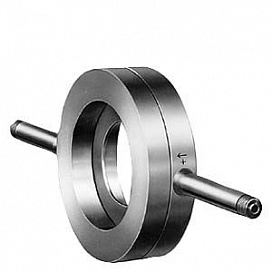- Главная
- -
- Каталог Siemens CA01, «ЦентрПлат»
- -
- Техника автоматизации
- -
- Датчики
- -
- Контрольно-измерительные приборы
- -
- Расходомеры
- -
- SITRANS F O delta p primary differential pressure devices
- -
- Pressure equipment directive 97/23/EC
Pressure equipment directive 97/23/EC
Обзор
The pressure equipment directive 97/23/EC applies to the alignment of the statutory orders of the European member states for pressure equipment used within its European area of validity. Equipment as defined by the directive includes vessels, pipelines and accessories with a maximum permissible pressure of more than 0.5 bar above atmospheric pressure.
Application of the pressure equipment directive was optional from November 29, 1999 onwards and has been mandatory since May 29, 2002.
Categorization according to danger potential
In compliance with the pressure equipment directive, equipment is divided into categories I to III or Article 3 paragraph 3 according to danger potential (medium/pressure/volume/nominal diameter).
The following criteria are decisive for assessment of the danger potential and are also shown in the diagrams (see "Characteristic curves").
Fluid group | Group 1 or 2 |
Aggregate state | Liquid or gaseous |
Type of pressurized equipment | |
| Nominal diameter, pressure or product of pressure and nominal diameter (PS * DN) |
Note
Liquids according to Article 3 are those liquids whose steam pressure is not more than 0.5 bar above standard atmospheric pressure (1013 mbar) at the maximum permissible temperature.
The maximum permissible temperature for the liquids used is the user-defined maximum process temperature. This must be within the limits defined for the equipment.
Categorization of media (liquid/gaseous) into fluid groups
In compliance with Article 9, fluids are divided into the following fluid groups:
Group 1 | |||
|---|---|---|---|
| | Potentially explosive R phrases: e. g.: 2, 3 (1, 4, 5, 6, 9, 16, 18, 19, 44) | | Highly toxic R phrases: e. g.: 26, 27, 28, 39 (32) |
| | Extremely flammable R phrases: e. g.: 12 (17) | | Toxic R phrases: e. g.: 23, 24, 25 (29, 31) |
| | Highly flammable R phrases: e. g.: 11, 15, 17 (10, 30) | | Oxidizing R phrases: e. g.: 7, 8, 9 (14, 15, 19) |
Flammable (where the maximum allowable temperature is above flashpoint). | |||
Group 2 | |||
All fluids not belonging to Group 1. Also applies to fluids which are e. g. dangerous to the environment, corrosive, dangerous to health, irritant or carcinogenic (if not highly toxic). | |||
Conformity rating
Pressure equipment of categories I to IV must comply with the safety requirements of the directive and be assigned the CE symbol.
They must comply with a conformity rating procedure according to Appendix III of the directive.
Pressure equipment according to Article 3 paragraph 3 must be designed and manufactured in agreement with the sound engineering practice SEP applicable in a member country, and must not be assigned a CE symbol (CE symbols from other directives are not affected).
The manufacturer issues a declaration of conformity if the orifice plates are produced for use in the area covered by the PED and are assignable to the categories I, II or III. This declaration of conformity is given to the customer. Its contents depend on the design data of the customer's plant. The design data can only be provided by the operator/customer, and must be specified in the product order for the orifice plate.
Submission of the following design data is mandatory:
- Medium (name)
- Aggregate state (liquid or gas)
- Fluid group 1 or 2
- Max. permissible pressure (PS) of the plant (not PN)
- Max. permissible temperature TS of the plant (not operating temperature)
- Nominal diameter DN
Note
Equipment designed for media with a high danger potential (e.g. gases of fluid group 1) may also be used for media with a lower danger potential (e. g. gases of fluid group 2, or liquids of fluid groups 1 and 2).
The pressure equipment directive according to Article 1 paragraph 3 does not apply to equipment such as e. g. mobile offshore plants, ships, aircraft, water supply and waste water networks, nuclear plants, rockets and pipelines outside industrial plants.






